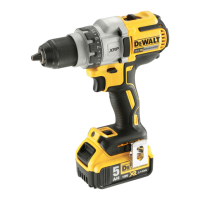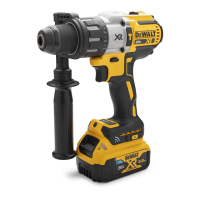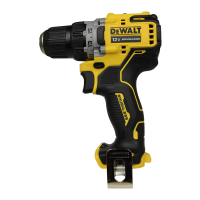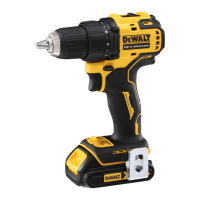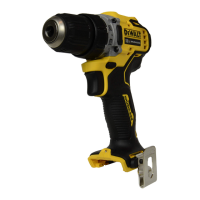English
9
• Make sure that cord is located so that it will not
be stepped on, tripped over, or otherwise
subjected to damage or stress.
• Do not use an extension cord unless it is
absolutely necessary. Use of improper extension
cord could result in risk of fire,electric shock, or
electrocution.
• Do not place any object on top of charger or place
the charger on a soft surface that might block the
ventilation slots and result in excessive internal
heat. Place the charger in a position away from any
heat source. The charger is ventilated through slots
in the top and the bottom of the housing.
• Do not operate charger with damaged cord or
plug— have them replaced immediately.
• Do not operate charger if it has received a sharp
blow, been dropped, or otherwise damaged in any
way. Take it to an authorised service centre.
• Do not disassemble charger; take it to an
authorised service centre when service or repair is
required. Incorrect reassembly may result in a risk
of electric shock, electrocution or fire.
• In case of damaged power supply cord, the supply
cord must be replaced immediately by the
manufacturer, its service agent or similar qualified
person to prevent any hazard.
• Disconnect the charger from the outlet before
attempting any cleaning. This will reduce the risk
of electric shock. Removing the battery pack will
not reduce this risk.
• NEVER attempt to connect two chargers together.
• The charger is designed to operate on standard
230V household electrical power. Do not attempt
to use it on any other voltage. This does not apply
to the vehicular charger.
Charging a Battery (Fig. B)
1. Plug the charger into an appropriate outlet before
inserting battery pack.
2. Insert the battery pack 1 into the charger, making
sure the battery pack is fully seated in the charger.
The red (charging) light will blink repeatedly
indicating that the charging process has started.
3. The completion of charge will be indicated by the
red light remaining ON continuously. The battery
pack is fully charged and may be used at this time
or left in the charger. To remove the battery pack
from the charger, push the battery release button
2 on the battery pack.
nOTE: To ensure maximum performance and life of
lithium‑ ion battery packs, charge the battery pack
fully before first use.
Charger Operation
Refer to the indicators below for the charge status of
the battery pack.
* The red light will continue to blink, but a yellow
indicator light will be illuminated during this
operation. Once the battery pack has reached an
appropriate temperature, the yellow light will turn off
and the charger will resume the charging procedure.
The compatible charger(s) will not charge a faulty
battery pack. The charger will indicate faulty battery
by refusing to light. nOTE: This could also mean a
problem with a charger.
If the charger indicates a problem, take the charger
and battery pack to be tested at an authorised service
centre.
hot/Cold Pack Delay
When the charger detects a battery pack that is too
hot or too cold, it automatically starts a Hot/Cold Pack
Delay, suspending charging until the battery pack has
reached an appropriate temperature. The charger
then automatically switches to the pack charging
mode. This feature ensures maximum battery pack
life.
A cold battery pack will charge at a slower rate than a
warm battery pack. The battery pack will charge at
that slower rate throughout the entire charging cycle
and will not return to maximum charge rate even if
the battery pack warms.
The DCB118 charger is equipped with an internal fan
designed to cool the battery pack. The fan will turn on
automatically when the battery pack needs to be
cooled. Never operate the charger if the fan does not
operate properly or if ventilation slots are blocked. Do
not permit foreign objects to enter the interior of the
charger.
Electronic Protection system

